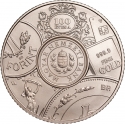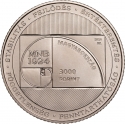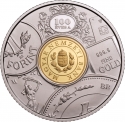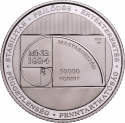You are about to finish your registration. Please check your mailbox (including spam folder). There should be a letter with a confirmation link. Check setting to make sure that your e-mail address is correct.
Send letter againDescription
Established in 1924 following the Austro-Hungarian Bank, with backing from the League of Nations' Economic and Financial Organization, the Magyar Nemzeti Bank, a member of the European System of Central Banks (ESCB), places a strong emphasis on international relations. It actively collaborates with global economic and financial institutions like the EU, IMF, OECD, and BIS. Its core objectives include ensuring price stability, managing the issuance of the Hungarian forint, regulating money supply, setting the Central Bank base rate, publishing official exchange rates, and overseeing foreign-exchange reserves and gold to influence exchange rates.
Originating from a stabilization loan facilitated by the League of Nations in 1923-1924, modeled after Austria's successful precedent a year prior, the Magyar Nemzeti Bank introduced the Hungarian pengő in 1927 to replace the korona.
During World War II and its immediate aftermath, the Magyar Nemzeti Bank struggled to maintain the value of the pengő, leading to the world's most severe hyperinflation episode in 1945-1946. Consequently, the bank introduced a new currency, the Hungarian forint, on August 1, 1946, and was subsequently nationalized by the end of 1947.
Obverse

|
Depicts the logo of the Magyar Nemzeti Bank, surrounded by a motif from the decorative frame of a share issued by the bank in 1924. This motif extends beyond the inner core on both sides, interrupting the pearl row along the outer edge of the front. Along the edge, "HUNGARY" is inscribed in the upper circular inscription, while the lower circular inscription reads "GUARDIAN OF THE INDEPENDENT, STABLE FINANCIAL SYSTEM SINCE 100 YEARS," arranged in three lines. The left side bears the inscription "1924," marking the establishment of the Magyar Nemzeti Bank, while the right side shows "2024," the year of issue. MAGYARORSZÁG |
|---|---|
Reverse

|
Depicts the denomination consisting of overlapping digits. A line is visible at the bottom on both the left and right sides. Inside the pearl border along the edge, at the top between wreath motifs, the "BP." mint mark is found, while at the bottom the "FORINT" inscription is readable in semi-circular form. BP. |
| Edge |
Characteristics
| Type | Commemorative Issue (Circulating) |
| Material | Copper Nickel Zinc |
| Weight | 8.6 g |
| Diameter | 23.8 mm |
| Thickness | 2.6 mm |
| Shape |
|
| Alignment | Medal |
| Mint |
Budapest Mint (BP)
|
Related coins
100th Anniversary of the Foundation of the Magyar Nemzeti Bank
100th Anniversary of the Foundation of the Magyar Nemzeti Bank







